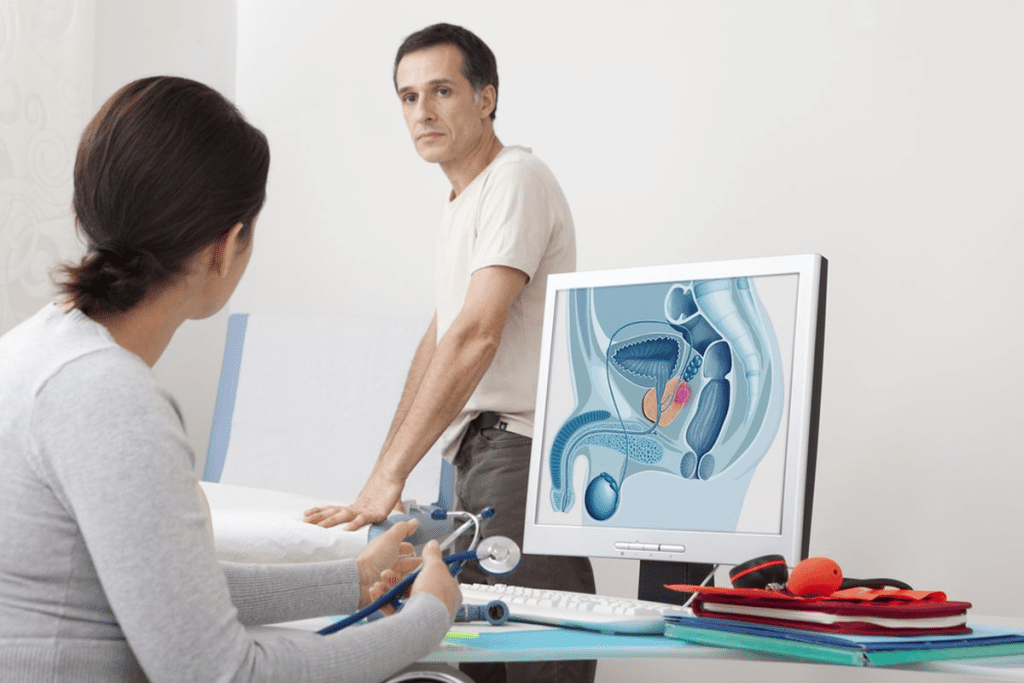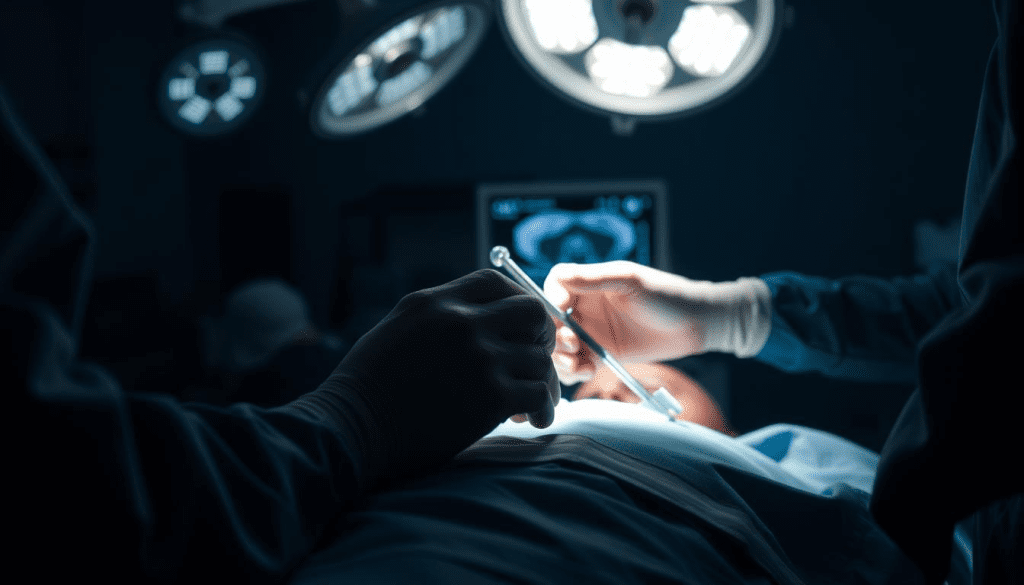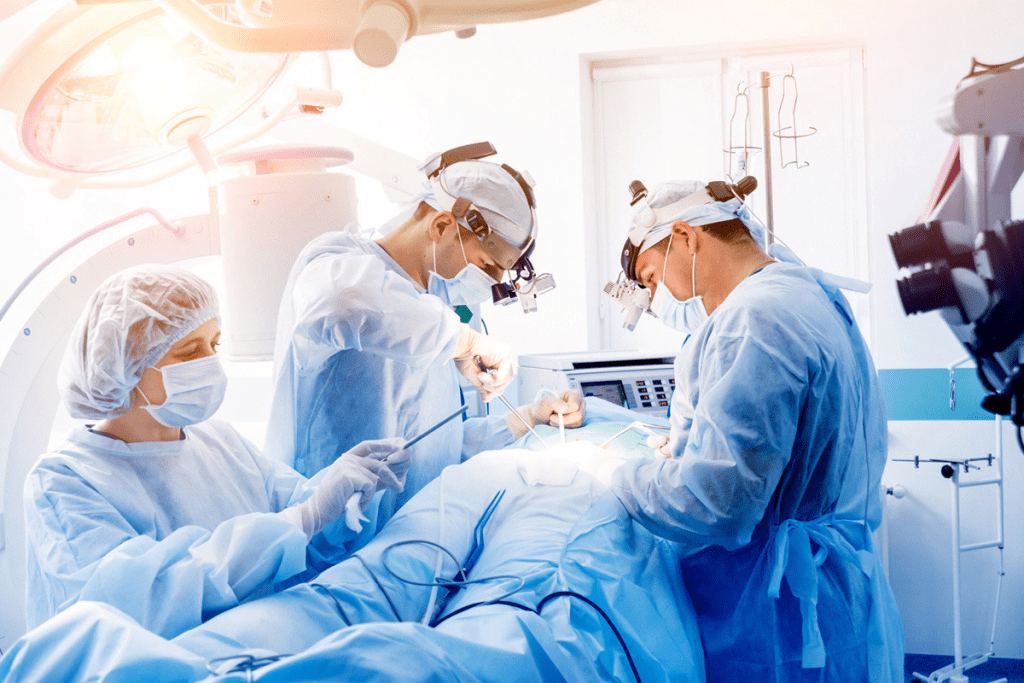Last Updated on November 25, 2025 by
Transurethral resection of the prostate (TURP) is a common surgery for urinary problems caused by an enlarged prostate. It’s natural to feel scared about any surgery. Knowing what TURP terf is about is key.

TURP is seen as a moderate-risk surgery. It’s done to treat benign prostatic hyperplasia (BPH). The goal is to remove parts of the prostate that block urine flow. This helps ease symptoms of an enlarged prostate.
It’s important to know about the risks, how long it takes, and the recovery process of TURP. We’re looking into the latest research and expert opinions. Our goal is to give you a clear idea of what to expect from this surgery.
For BPH patients, understanding TURP is key. It’s a common surgery to help with urinary issues. The procedure uses a resectoscope to remove prostate tissue blocking urine flow.
TURP is a surgery to remove prostate tissue blocking urine. A resectoscope is used through the urethra. This method avoids any cuts on the outside.
TURP is seen as a moderate-risk surgery. It helps with BPH symptoms but has risks like bleeding and infection. It can also affect urine control or sex life.
The surgery time varies from 30 to 60 minutes. Sometimes, it can take longer for bigger prostates.
Despite being a big surgery, TURP has seen better results thanks to new techniques and care. We’ll look into the procedure, its risks, and recovery in the next parts.
The time a TURP operation takes can change a lot. This depends on the prostate size and how complex the surgery is.

Most TURP surgeries last 30 to 60 minutes. This is the usual time for patients with benign prostatic hyperplasia (BPH).
If the prostate is very big, the surgery can last up to 98 minutes. This is because more tissue needs to be removed.
The surgery length is key, but so is how it affects the patient. Longer surgeries might raise the risk of problems. A 9% overall complication rate can go up if the surgery lasts over 90 minutes.
Things to think about for patients include:
Knowing these points helps patients get ready for their TURP surgery and recovery.
TURP is a common procedure, but it has a 9% chance of complications. It’s important for patients to know these risks before deciding on treatment.
While TURP is mostly safe, some complications can happen. These include urinary tract infections, erectile dysfunction, and dry orgasm.
Other, rarer risks are bleeding needing a blood transfusion, sepsis or shock, and deep vein thrombosis.

Procedures lasting over 90 minutes can raise the risk of problems. Longer surgeries are more likely to cause bleeding and infection. We watch patients closely during these longer surgeries to lower these risks.
It’s key for patients to talk to their doctor about their specific risks. This way, they can understand how to lessen the chance of complications.
Knowing the possible complications and risks of TURP helps patients prepare for the procedure and recovery. Our team is dedicated to giving full care and support during the treatment process.
Understanding the TURP procedure is key for those thinking about it for BPH. It includes steps from getting ready to aftercare.
Before the TURP procedure, patients stop certain medications that might mess with the surgery. Urocare London says patients get anesthesia for comfort during the surgery.
This prep is vital to reduce risks and make the surgery go smoothly.
In the terf TURP surgery, the surgeon removes extra prostate tissue that blocks urine flow. They use a resectoscope through the urethra.
The TURP procedure is a good choice for BPH, giving big relief from symptoms.
After surgery, patients watch for any quick problems in the recovery area. Most need a short hospital stay. Recovery is quicker than with more invasive surgeries.
Quick care after surgery is key to spotting and fixing any issues fast.
The journey to recovery after TURP surgery has important steps. At Liv Hospital, we focus on your well-being. Our team works together to make your recovery smooth.
Patients usually stay in the hospital for 1 to 2 days after TURP. This time is for watching over you closely and taking care of you right after surgery.
In the early stages, you’ll need to manage any pain and avoid strenuous activities. Resting and following a recovery plan is key to healing well.
Most people can get back to their usual activities in a few weeks. It’s important to not lift heavy things or do strenuous exercises yet. We offer personalized advice to guide you through your recovery.
Knowing what to expect in your recovery helps you prepare. It lets you focus on getting better without worry.
TURP is a flexible procedure that works for various prostate sizes. Its ability to adapt to different sizes makes it a top choice for treating Benign Prostatic Hyperplasia (BPH).
Research has looked into how prostate size impacts TURP results. It shows that bigger prostates might need longer surgeries. But the complication rates and how well the prostate works after surgery are similar to smaller ones.
Our studies show that even with bigger prostate glands, patients can get the same benefits as those with smaller ones. They’ve found TURP works well for all sizes of prostates.
For bigger prostates, we use special TURP methods to get better results. These include:
Understanding how TURP can be tailored for different prostate sizes helps us talk to patients better. The TURP procedure is a proven treatment for BPH, no matter the prostate size.
Patients often compare TURP to other treatments for Benign Prostatic Hyperplasia (BPH). At Liv Hospital, we focus on TURP with a team approach, putting patient care first. Other options include laser treatments and UroLift.
TURP is less invasive than open prostatectomy. Open prostatectomy needs a big cut and takes longer to heal. TURP goes through the urethra, causing less damage and healing faster. It’s safer for many patients.
Laser treatments like HoLEP are popular alternatives to TURP. They cut down on bleeding and hospital stays. Yet, TURP is effective for certain prostate sizes.
TURP is best for certain prostate sizes and patients. Choosing TURP or another procedure depends on many factors. Our team helps decide the best treatment for each patient.
We’ve looked into the TURP procedure, a treatment for BPH. It’s known for its complexity. Yet, it’s actually a safe and effective option.
At Liv Hospital, we know surgery can be scary. Our team is here to give you the best care. We focus on making sure you’re comfortable and supported during your treatment.
For us, a successful TURP isn’t just about the surgery. It’s about your whole experience. We help you understand what to expect and how to recover well.
In short, TURP is a good choice for BPH. It offers big benefits with some risks. The idea of TURP being a “big operation” is often wrong. At Liv Hospital, we aim to give you the best care. This makes TURP a solid option for BPH relief.
TURP, or Transurethral Resection of the Prostate, is a surgery for BPH. It removes prostate tissue to help with urinary issues.
TURP is seen as a moderate-risk surgery. Thanks to new technology, it’s safer and more effective now.
TURP surgery usually lasts between 30 to 60 minutes. But, for bigger prostates, it might take up to 90-98 minutes.
TURP has a 9% complication rate. Common issues include bleeding, infection, and incontinence. Longer surgeries increase these risks.
Larger prostates might need longer surgeries. But TURP’s results are mostly the same, no matter the size. For bigger prostates, doctors might use special techniques.
Hospital stays after TURP vary, but most leave in a few days. You’ll start with pain management and slowly get back to normal activities.
TURP is often compared to open prostatectomy and laser treatments. It’s best for moderate-sized prostates, balancing effectiveness and risk.
Semen retention, or retrograde ejaculation, is a TURP side effect. It happens when semen goes into the bladder instead of being ejaculated.
In medicine, “bore” means the diameter of tools, like the resectoscope used in TURP.
TURP involves using a resectoscope through the urethra to remove prostate tissue. It’s done under anesthesia, and patients are closely watched after.
“Turbo cancer” is not a real medical term. It might be a mix-up with a different condition. TURP treats BPH, not cancer.
In medicine, “op” stands for “operation” or “surgery.” For TURP, it means the surgery itself.
“Strenuous” means demanding or requiring a lot of energy. After TURP, avoiding such activities helps with recovery.
Prostate orgasm is a pleasurable feeling some men get from prostate stimulation. TURP might affect sex, but it’s not directly linked to prostate orgasm.
“Terf” is not a medical term. It’s short for “trans-exclusionary radical feminist,” which has nothing to do with TURP or prostate health.
Milonas, D., Jievaltas, M., Mickys, U., & Milonas, Z. (2015). The effect of complete transurethral resection of the prostate on symptom improvement, quality of life, and voiding function in patients with benign prostatic hyperplasia. Central European Journal of Urology, 68(1), 65-72. https://pmc.ncbi.nlm.nih.gov/articles/PMC4526604/
Subscribe to our e-newsletter to stay informed about the latest innovations in the world of health and exclusive offers!